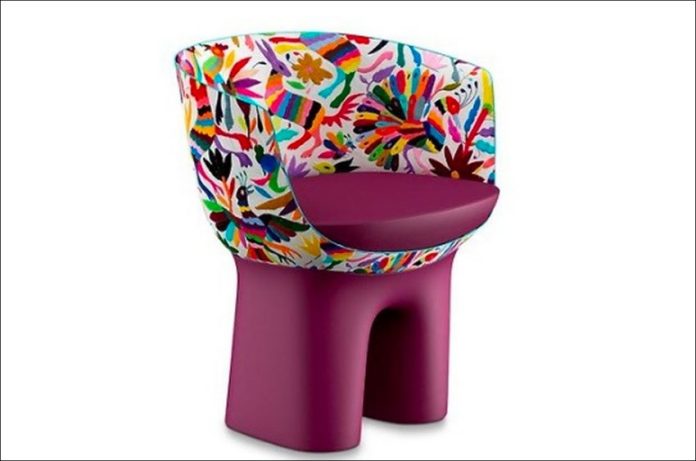Mexico’s Culture Secretariat is jealously guarding traditional Mexican designs from being used by international fashion brands.
Culture Secretary Alejandra Frausto sent a letter Friday to the French brand Louis Vuitton over the latter’s use of indigenous Mexican patterns for a very expensive chair.
The letter notes that in Vuitton’s collection Dolls by Raw Edges, one particular chair uses embroidery patterns that are intellectual property of the indigenous Otomí community of Tenango de Doria, Hidalgo.
Frausto asked if Louis Vuitton tried to contact the community and if it has their permission to use the designs.
“Each piece is unique and unrepeatable,” the letter reads. “And at the same time, it is the result of the continuity of the work of many generations who transmit knowledge, skill and creativity.”
The chair, whose price is US $18,200, uses embroidered images of multicolored animals which are typical to Tenango de Doria. By Tuesday, the chair had been taken down from Louis Vuitton’s website and social media pages.
Frausto invited the French company to work with the indigenous communities to agree on “direct and concrete benefits for all parties” and “give the communities the recognition they deserve.”
In June, Frausto sent a similar letter to the brand Carolina Herrera over its collection Resort 2020, which the culture secretary said constituted cultural appropriation of indigenous designs. According to the company, Resort 2020 was inspired by Mexican handicrafts and seeks to evoke a sunrise in Tulum, Quintana Roo, and a trip through Mexico City.
Frausto’s letter to Carolina Herrera asked for “an explanation of the use of indigenous designs and embroidery,” the origin of which, she said, “is clearly documented.”
In response, Carolina Herrera creative director Wes Gordon said the collection sought to respectfully pay homage to the “brilliant and diverse handicraft work” of Mexico and celebrate the brand’s Latin American origins.
Source: Univisión (sp)
